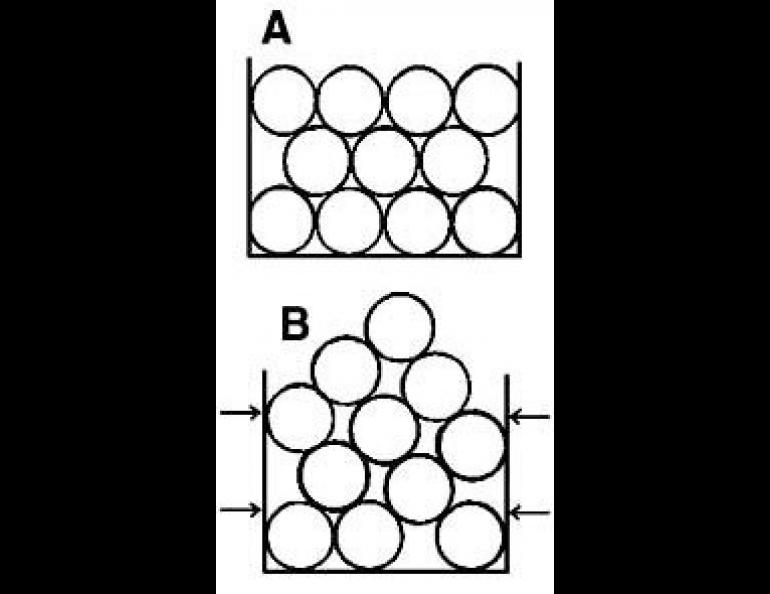
Rock Dilatancy
Many of the phenomena which precede a earthquake and are now of aid in earthquake prediction are thought to be caused by another phenomenon called dilatancy. Unlikely as it sounds, the idea is that rocks expand when squeezed.
To see how this is possible, consider a well-shaken box of marbles. The marbles settle in a configuration, leaving minimum spacing, as shown in A. But then if two opposite sides of the box are pushed together, as in B, the marbles move such that larger air spaces exist between them. Hence the total volume increases.
In the theory of dilatancy, rocks are considered to be composed of tiny grains. If the ground surface starts to rise or if water rises in wells, it means that the rocks are being deformed and the rock grains are being dislocated from their minimum volume configuration. The deformation seems to be greatest just before the rocks break&emdash;that is, in the hours just before the earthquake.





